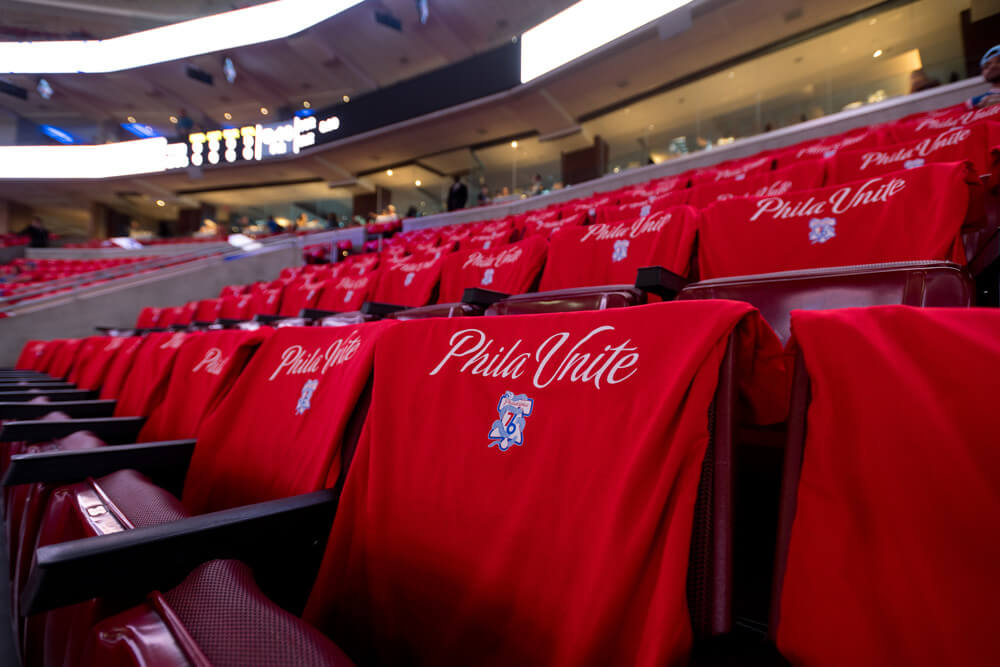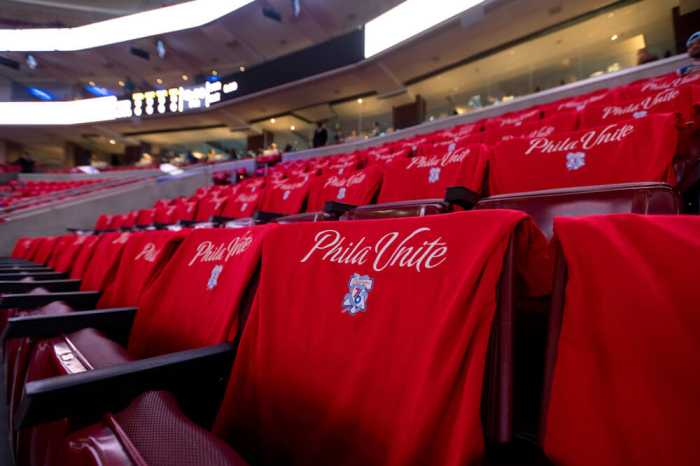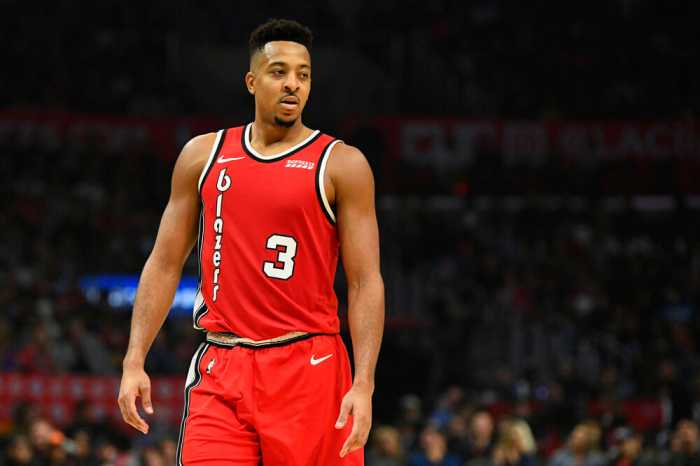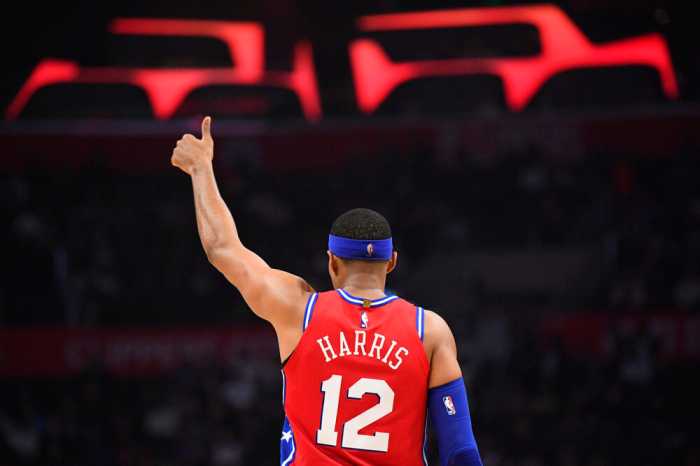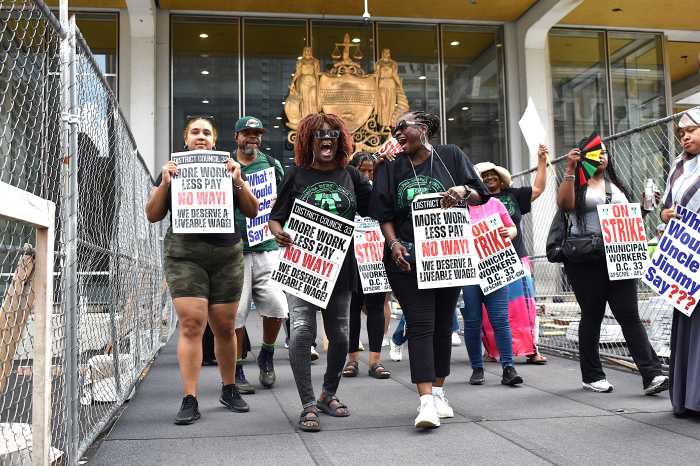One of the most polarizing periods in Sixers‘ history was the Process years. What went into one of the most contentious eras in NBA history?
Sam Hinkie may be one of the most controversial figures in all of recent sports history. On the one hand, he rebuilt a storied Philadelphia franchise from mediocrity to championship contender. He took a roster devoid of talent and turned it into a citadel of high draft picks and All-Stars. On the other hand, he did this by intentionally lowering the quality of his roster during the year and by losing consistently for years to come.
With the 76ers recent collapse in the playoffs, many are stating that The Process didn’t work. That all of the losses and suffering the Philadelphia faithful went through was for nothing. However, it is important to remember where this team was and where they are now so we may no longer take for granted how beautiful and one of a kind The Process truly was.
Year One
In the beginning, there was darkness. A roster full of serviceable backups, failed experiments, and lonely bright spots. Their own future draft picks are traded around the nation. A record of 34-48, good enough for the ninth seed in the East. This is not Hell; this is worse. This is basketball purgatory. The state of being where the ceiling is only as high as an eighth seed, losing in the first round, and a floor that will cause you to finish no lower than the tenth seed, consistently missing out on all of the sure-fire top prospects.
This is where the Philadelphia 76ers found themselves in the year 2013. As team owner Joshua Harris watched the NBA Playoffs, he realized whom he would need to hire to replace ex-president Rod Thorn and general manager Tony DiLeo. The same man that Mr. Harris had previously passed on for Tony DiLeo. Joshua Harris decides to hire Samuel Blake Hinkie.
Sam Hinkie was, at the time, the Vice President of Basketball Operations for the Houston Rockets. He had been a cornerstone in the development of their analytically-driven organization. Hinkie had been a very successful student at the University of Oklahoma and even more so when he completed his MBA at Stanford University, working as a consultant for two different NFL teams on draft strategies. With all of this in mind, on May 13th, 2013, acting owner Joshua Harris hired the man who would take a team from basketball purgatory, drag it through the deepest depths of hell, and back to contention in one of the most successful rebuilds of all time.
Sam Hinkie was clear about what he wanted to do. He wanted to build a perennial championship contender. He wanted to get superstars to build his team around, and he wanted to acquire them in a very specific way. Hinkie didn’t want to fall victim to the allure of trades which causes teams to pour out the cupboards to achieve a good, not great team. Hinkie instead wanted to hold onto his assets. He also didn’t want to rely on free agents coming to or teaming up on his team. Sam Hinkie was only interested in building his team through the draft, understanding that drafting players led to cheap contracts, team control, and advantages when attempting to negotiate new contracts – three things very important to a struggling franchise.
Hinkie’s ideology was simple. Acquire as many picks as possible in every draft, have his team be as bad as possible in order to have a better chance to secure top prospects, and maintain a long view that allowed for the Sixers to become a perennial contender. The Process for escaping basketball purgatory is rarely a fun one, often leading to suffering and a whole lot of losing. This was something that Hinkie had understood. This escape would cause Hinkie to also sell everything with value during these early times, and this was made abundantly clear during the 2013 NBA draft.
On July 27th, 2013, Sam Hinkie traded away the sole beacon of hope for the Philadelphia faithful in All-Star Jrue Holiday and the 42nd pick (Pierre Jackson) to the New Orleans Pelicans for the rights to the sixth overall pick, an injured Nerlens Noel., and rights to the Pelicans 2014 first-round pick, top 5 protected. This trade and pick are seen to many as the start of the Process. With this trade, the Sixers would be allowed to escape from basketball purgatory and finally begin their rebuild.
After trading away his star guard and securing a top prospect with cornerstone potential, Hinkie then turned to his two remaining draft picks: Pick 11 of the first round, and pick 35 in the second. With the 11th overall pick, Hinkie selected Michael Carter-Williams, a point guard out of Syracuse, and with the 35th pick Glen Rice Jr, a shooting guard out of Georgia Tech and the then titled NBA D-League.
Even after gaining these three young players, Hinkie would end up trading Glen Rice Jr. to the Washington Wizards for the rights to Pick 38 Nate Wolters (point guard, SDSU) and Pick 54 Arsalan Kazemi (power forward, Rice University). Then, using Pick 38 Nate Wolters, Hinkie made a trade sending Wolters to the Milwaukee Bucks in exchange for Pick 43 Ricky Ledo from Providence University and a 2014 second-round pick. Immediately following this trade for Ledo, Hinkie then flipped him to the Dallas Mavericks for another 2014 second-round pick.
At the root of these seemingly sporadic trades is a clear desire to acquire more draft picks, demonstrated so clearly here by taking one player (Glen Rice Jr.) and turning it into two future second-round picks and another player in Arsalan Kazemi. The key to The Process was never to be perfect at drafting but simply to give his team as many chances to get the right draft pick as possible.
While all of these trades, draft selections and future picks are nice, Sam Hinkie now had to find a head coach to keep his team playing basketball throughout this long process. He found the man for the job on August 14th, 2013, when he hired a man named Brett Brown as head coach after Brown had spent the few previous years underneath San Antonio Spurs Head Coach Gregg Popovich. Although his time in Philadelphia didn’t come to the most poetic of endings, his work ethic, defensive focus, and steady hand were extremely valuable to the Philadelphia 76ers during this era.
After Hinkie filled out the rest of the staff, he once again hit the trade market. On August 22nd, the Philadelphia 76ers agreed to a trade with the Memphis Grizzlies. The team acquired former first-round pick and one year pro Tony Wroten in exchange for a heavily protected second-round pick that would never, and never did convey.
The beauty in this trade is in the exchange of value. While Wroten never lived up to the expectations that come with being a first-round pick, the value of finding that out should have cost something. Instead, the Sixers traded a pick that everyone knew meant nothing to bring a player who had a chance to become something for basically nothing. Hinkie, in this trade, turned a literal nothing into the potential for something, and that is all that we could ask for.
Following this transaction, Hinkie signed former Georgetown and Tulsa 66ers forward Hollis Thompson to a multi-year deal on September 24th. During Thompson’s three and a half years in the city of brotherly love, he became both an important starter and a valuable rotation piece who averaged 7.9 points per game while shooting 38.6% from beyond the arc, all while playing solid defense.
With such an unproven core of incoming players, Hinkie continued to tinker with the roster as the season went on. From September 2013 to April 2014, Hinkie went on a string of signings, signing former Florida State center Solomon Alabi, Depaul power forward Mac Koshwal, Georgia Tech power forward Gani Lawal, Kentucky Center Daniel Orton, BYU power forward Brandon Davies, Memphis shooting guard Elliot Williams, NC State point guard Lorenzo Brown, current Miami Heat center Dewayne Dedmond, Mississippi State power forward Jarvis Varnado, Marquette shooting guard Darius Johnson-Odom, UC Santa Barbara small forward James Nunnally, and Memphis small forward Adonis Thomas.
The last big day for year one came on February 20th, 2014, at the trade deadline where Sam Hinkie engaged in four different trades. First came the trade of Lavoy Allen and Evan Turner to the Indiana Pacers for walking bucket Danny Granger and a 2015 second-round pick which became Luka Mitrović. Next, Hinkie traded a future second-round pick that would never convey to the Los Angeles Clippers for previous first-round pick Byron Mullens and a 2018 second-round pick that would eventually become Justin Jackson. Finally, Spencer Hawes was traded to the Cleveland Cavaliers for Earl Clark, Henry Sims, and two 2014 second-round picks, which later would become Vasilije Micić and current Pistons star Jerami Grant.
Hinkie also finalized a three-team trade on this day, that had the Nuggets send Andre Miller and a heavily protected second-round pick to the Washington Wizards, Jan Veselý to the Denver Nuggets from the Wizards while the Sixers gained two future second-round picks (David Michineau and Artūras Gudaitis) and Eric Maynor from the two teams.
Hinkie’s first year of The Process was a foundation-laying year for that would set in motion the most dramatic and drastic rebuilding plan ever, that would eventually cause the Sixers to become perennial playoff contenders, potential championship contenders, and would cause Sam Hinkie, the mastermind behind it all, to be run out of the league.
Hinkie and his controversial methods were what caused the Sixers to leave a place of darkness and finally start on the path to success. In his first year, Hinkie had a total of 17 signings, 9 trades and made 3 total draft selections.

